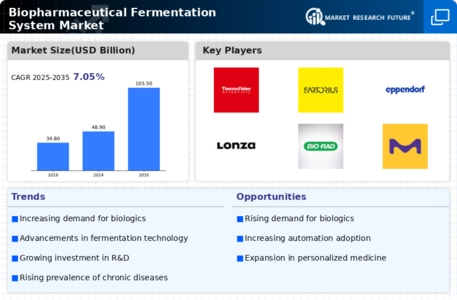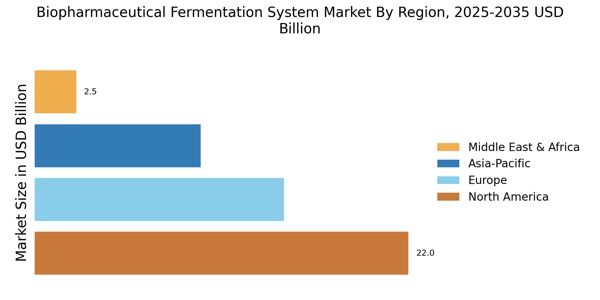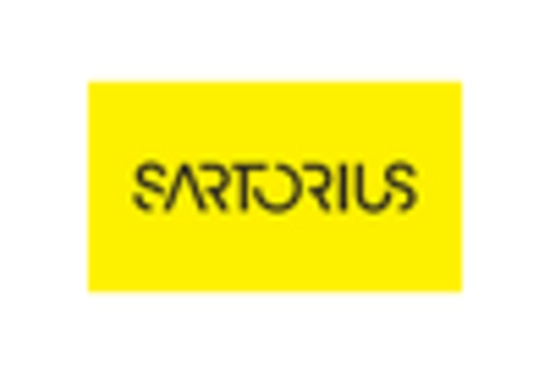Rising Demand for Biopharmaceuticals
The increasing prevalence of chronic diseases and the aging population are driving the demand for biopharmaceuticals. This trend is particularly evident in the biopharmaceutical fermentation system market, where the need for innovative therapies is paramount. According to recent data, the biopharmaceutical sector is projected to grow at a compound annual growth rate of over 8% in the coming years. This growth is likely to spur investments in fermentation technologies, as companies seek to enhance production efficiency and reduce costs. The biopharmaceutical fermentation system market is thus positioned to benefit from this rising demand, as manufacturers strive to meet the needs of healthcare providers and patients alike.
Advancements in Fermentation Technology
Technological innovations in fermentation processes are significantly influencing the biopharmaceutical fermentation system market. Enhanced bioreactor designs, improved monitoring systems, and automation are streamlining production and increasing yield. For instance, the introduction of single-use bioreactors has revolutionized the manufacturing landscape, allowing for greater flexibility and reduced contamination risks. As these technologies continue to evolve, they are expected to drive efficiency and lower operational costs. The biopharmaceutical fermentation system market is likely to see a surge in adoption of these advanced technologies, as companies aim to optimize their production capabilities and respond to the growing demand for biopharmaceutical products.
Regulatory Support for Biopharmaceuticals
Regulatory frameworks are evolving to support the development and commercialization of biopharmaceuticals, which positively impacts the biopharmaceutical fermentation system market. Agencies are streamlining approval processes and providing guidance on manufacturing practices, thereby encouraging investment in fermentation technologies. This regulatory support is crucial for companies looking to bring new biopharmaceutical products to market efficiently. As regulations become more favorable, the biopharmaceutical fermentation system market is expected to expand, with manufacturers increasingly adopting advanced fermentation systems to comply with stringent quality standards and expedite product development.
Increased Investment in Biopharmaceutical Research
Investment in biopharmaceutical research and development is on the rise, which is a key driver for the biopharmaceutical fermentation system market. Pharmaceutical companies are allocating substantial resources to discover and develop new therapies, particularly in areas such as oncology and immunology. This trend is reflected in the significant increase in clinical trials and the number of new drug applications submitted to regulatory bodies. As research intensifies, the need for efficient fermentation systems becomes critical to support the production of biologics. Consequently, the biopharmaceutical fermentation system market is likely to experience growth as companies seek to enhance their production capabilities to meet the demands of innovative drug development.
Growing Focus on Sustainable Manufacturing Practices
Sustainability is becoming a focal point in the biopharmaceutical fermentation system market, as companies strive to minimize their environmental impact. The push for greener manufacturing processes is leading to the adoption of bioprocessing techniques that reduce waste and energy consumption. Innovations such as continuous fermentation and the use of renewable resources are gaining traction. This shift not only aligns with corporate social responsibility goals but also meets the expectations of consumers and stakeholders. As sustainability becomes a priority, the biopharmaceutical fermentation system market is likely to see increased investment in technologies that promote eco-friendly production methods.


















Leave a Comment